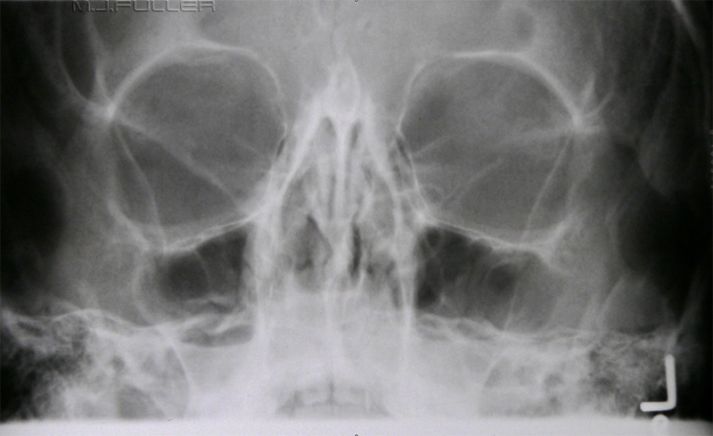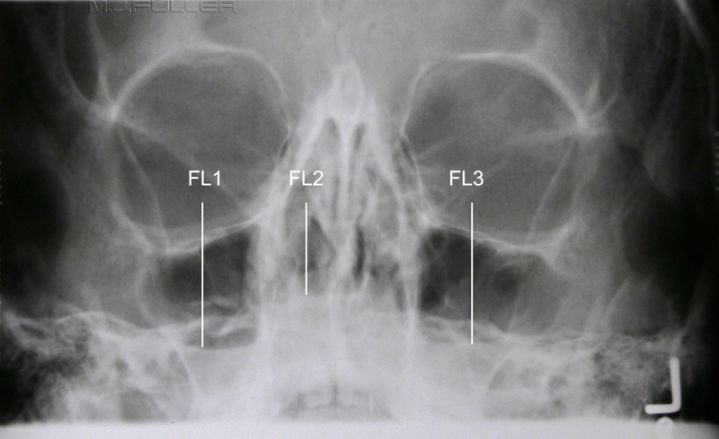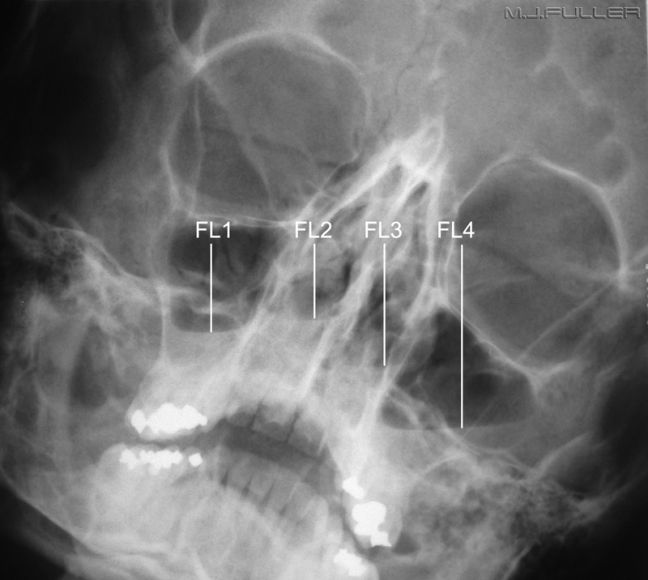The "Leaning Tower" view of the Paranasal Sinuses
Presentation
This patient has presented to the Emergency Department with general malaise and facial pain. The patient has provided a history of sinusitis with no history of facial trauma. The patient has been referred for a paranasal sinus X-ray examination.
Imaging1The Radiographer has attempted to perform an OM view of the paranasal sinuses. Can you see any pathological features?
There appear to be fluid levels in the maxillary sinuses (FL1 and FL3) and there is a suggestion of a further fluid level (FL2) although this is unclear.
DiscussionThe positioning error demonstrated in this image is one of ‘under-tilting’ of the patient's skull, resulting in the petrous bones being superimposed over the inferior half of the maxillary sinuses. The patient could not extend her neck any further. Whilst the tube can be angled caudally to correct this problem, the result is inferior because of the reduced ability to demonstrate fluid levels. This superimposition of the petrous is particularly problematic in that any fluid levels may become confused with the other horizontal bony structures of the skull, particularly the petrous bone. Of the many technique fixes for this problem, the radiographer decided to perform a leaning tower view to good effect as shown below.
Imaging2
This view separates the fluid levels in the paranasal sinuses from the other horizontal bony structures of the skull and facial bones. There are in fact four fluid levels (FL1- FL4) suggesting extensive paranasal sinus disease involving the maxillary and ethmoid sinuses.
The two linear lucencies mid-orbit are slits of air between the eyelids.
CommentThese images were taken by a student radiographer in 1979. This type of radiography is not seen as often now because of the superior imaging provided by CT scanning.
....back to the applied radiography home page here


